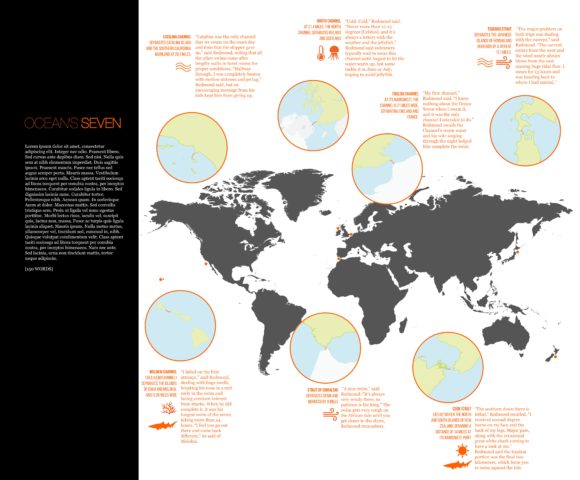With the world shutting down, we’re reaching into our archives and pulling some of our favorite stories from the SwimSwam print edition to share online. If you’d like to read more of this kind of story, you can subscribe to get a print (and digital) version of SwimSwam Magazine here. This story was originally published in the 2016 Spring issue of SwimSwam Magazine.
Climbing has the Seven Summits. Horse racing, the Triple Crown. And since 2009, open water swimming has had its own unique challenge: the Oceans Seven.
Conceived by Steven Munatones, the founder of the World Open Water Swimming Association, the Oceans Seven combines seven of the most iconic and challenging open water swimming courses into a gauntlet so challenging that only six people in history have successfully completed it.
“Challenges like the Oceans Seven are great ways to motivate people to continue to seek marathon swimming challenges throughout their lives,” said Munatones.
The first man to complete the Oceans Seven was Stephen Redmond of Ireland in 2012. We talked with Redmond and Munatones to get the scoop on each of the seven:
English Channel: “The famed English Channel is considered the most prestigious channel swim worldwide,” says Munatones. It’s also where Redmond started his Oceans Seven run. Swimmers have been attempting this cold-water channel for more than 100 years, with the first success happening in 1875.
Tsugaru Channel: A newcomer to open water swimming, Tsugaru wasn’t completed by a swimmer until 1989. “The major problem on both trips was dealing with the current,” said Redmond. “It enters from the west and the wind nearly always blows from the east, causing huge tidal flow. I swam for 13 hours and was heading back to where I had started.”
North Channel: “Cold,” Redmond said. “Never more than 12-13 degrees [Celsius], and it’s always a lottery with the weather and the jellyfish.” Redmond said swimmers typically wait to swim this channel until August to let the water warm up, but some tackle it in June or July, hoping to avoid jellyfish.
Cook Strait: “The sunburn down there is lethal,” Redmond recalled. “I received second degree burns on my face and the back of my legs. Major pain, along with the occasional great white shark coming to have a look at me.” Redmond said the hardest portion was the final two kilometers, which forced him to swim against the tide.
Molokai Channel: “Its’ warm water and tropical heat offer different challenges than the cold water channels,” said Munatones. Molokai also features treacherous sea life, including the Portuguese man o’war and the great white shark. “I failed on the first attempt,” said Redmond, and when he did complete it, the course took more than 24 hours – his longest swim of the seven.
Catalina Channel: Night swimming, ocean swells, sharks and jellyfish combine to raise the difficulty of the only American portion of the Oceans Seven. “Halfway through, I was completely beaten with motion sickness and jet lag,” Redmond said, but an encouraging message from his kids kept him from giving up.
Strait of Gibraltar: “A nice swim,” said Redmond. “It’s always very windy there, so patience is the king.” The swim gets very rough on the African side until you get closer to the shore, Redmond remembers, “Boat traffic is another interesting hazard along this important world shipping route.”

